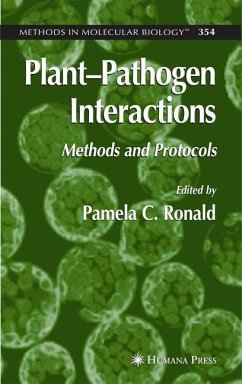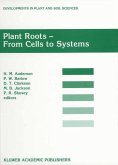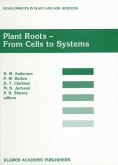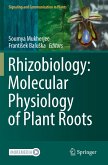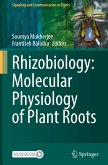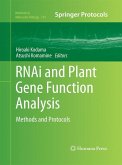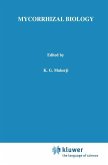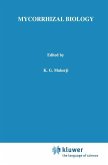Plant-Pathogen Interactions: Methods and Protocols provides key methods, approaches, and strategies to dissect the plant defense response. Addressing methods to identify and characterize plant resistance genes as well as pathogen-associated molecules that trigger the plant defense response, this volume creates a better understanding of the interactions between pathogens and their hosts, which will help to develop better methods for disease control in plants and animals.
Plant-Pathogen Interactions: Methods and Protocols reviews methods for engineering resistance to plant viruses, the utility of viral induced gene silencing and RNAi silencing, as well as advances in genomics and proteomics that have lead to new methods to identify genes and proteins. The protocols presented follow the successful Methods in Molecular Biology(TM) series format, each one offering step-by-step laboratory instructions, an introduction outlining the principle behind the technique, lists of equipment and reagents, and tips on troubleshooting and the avoidance of known pitfalls.
Plant-Pathogen Interactions: Methods and Protocols reviews methods for engineering resistance to plant viruses, the utility of viral induced gene silencing and RNAi silencing, as well as advances in genomics and proteomics that have lead to new methods to identify genes and proteins. The protocols presented follow the successful Methods in Molecular Biology(TM) series format, each one offering step-by-step laboratory instructions, an introduction outlining the principle behind the technique, lists of equipment and reagents, and tips on troubleshooting and the avoidance of known pitfalls.
From the reviews: "In a highly lucid manner, this book describes new developments in generic techniques and others which are exclusive to plant pathologists. As a result this book will be of interest to seasoned practioners in the field as much as new post-graduate students. ... The presentation of each section is exemplary, with a useful summary, a concise introduction to each section and a step-by-step protocol. ... this is a wide-ranging protocols book that will be useful to plant pathologists at all stages in their careers." (Dr Luis Mur, Molecular Biotechnology, 2007) "The book is divided into 18 chapters ... . this book is an excellent reference for people interested in validating or improving existing lab protocols. ... serve as a basic reference work for those entering into a new research area. ... Texts are clearly written and the tabular format makes it easier to adopt novel methods step-by-step. This makes the book also a valuable tool for people involved in teaching. All in all, I can recommend this book as a good value for the money." (Ulrich Schaffrath, Journal of Plant Physiology, Vol. 165, 2008) "In this volume, the editor has assembled a versatile collection of papers that focus on large-scale analyses of plant-pathogen interactions. ... With contributions from over 40 experts in their fields, this stepwise set of protocols ... will certainly be of interest to molecular plant-pathogen researchers." (Tzvi Tzfira, Quarterly Review of Biology, Vol. 82, 2007)

